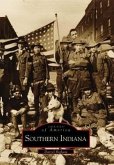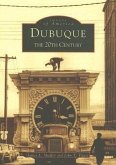Known as the home of the Prohibition-era Shelton Brothers Gang, the true heritage of Wayne County, Illinois, is the collective life of its ordinary citizens In 1819, settlers named the county seat Fairfield because there was no fairer field than the broad prairie between the timberlands, and soon enough, the villages that scattered across the 715-square-mile county attracted families, teachers, doctors, blacksmiths, ministers, and shopkeepers. The railroad brought prosperity, and by the beginning of the 20th century, Fairfield had an opera house, college, stately churches, elegant homes, and a packed business district. Sexton Manufacturing added a massive factory complex to the town in the early 1900s, and on farms, poultry production reached industry levels. The discovery of oil in 1937 relieved Depression-era woes and fueled Fairfield's civic expansion after World War II. These photographs show generations of shopkeepers, students, farmers, musicians, builders, barbers, teachers, merchants, and factory workers in the heart of the rural Midwest.
Bitte wählen Sie Ihr Anliegen aus.
Rechnungen
Retourenschein anfordern
Bestellstatus
Storno



